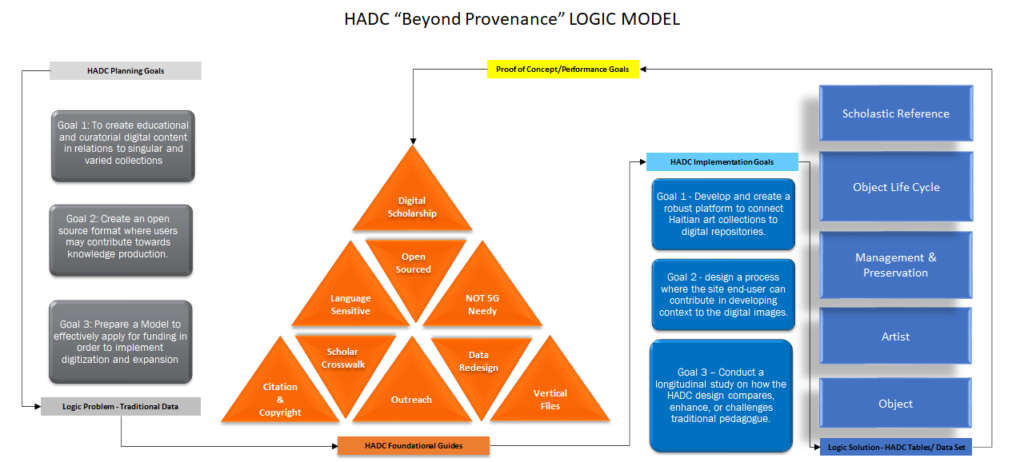Our HADC approach to digitization rethinks standards within the fields of art history and museum studies, with close attention to the peculiarities of Haitian art traditions and practices. We seek to create an accessible database working across collections and informed by Haiti, its diaspora, and the Kreyol language. In following the best practices of a “Western” canon and its processes, much of the history of Haitian visual arts is stripped out and left fragmented. The traditional methods of acquiring and displaying information related to visual arts are reduced to collecting the least amount of data to standardize the meta. In most cases, the information provided on Haitian art is incomplete. Depending on the history of acquisition, the artist’s name or the proper name of the piece is sometimes designated ‘unknown.’ The owner often provides the information submitted. To comprehend Haitian visual art is to go beyond the information provided in provenance or the traditional methods of displaying exhibitions.
HADC introduces three key focus areas to collect, record, and reintroduce Haitian visual art properly. The first is to establish a set series of photography processes to better display the nuances of the various art forms and their production. The second is to expand the current data fields and schema designs to accommodate the level of information omitted regarding the artist, the object, and the art form, and the third is to incorporate the Kreyol language to bridge terminologies lost in translation and to communicate more effectively within the various audiences. For HADC to be consistent in process and delivery, we have created a series of foundational guidelines to establish best-practice models and proper ethical standards, which we will make transparent and publicly available through our online interface.
